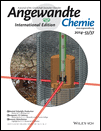Orientation-Controlled Single-Molecule Junctions†
We thank Dr. Yangjun Xing for help with the software used for statistical analysis and fitting of the SMC data. Financial support from NSF (grant CHE0809838) is gratefully acknowledged.
Graphical Abstract
The conductivity of a single aromatic ring, perpendicular to its plane, is determined (see picture; I=current). The formation of highly ordered structures of mesitylene oriented parallel to an Au (111) plane enables direct contact between a scanning tunneling microscopy tip and the π-system of mesitylene to create highly conductive Au/aromatic/Au junctions under ambient conditions.
Abstract
The conductivity of a single aromatic ring, perpendicular to its plane, is determined using a new strategy under ambient conditions and at room temperature by a combination of molecular assembly, scanning tunneling microscopy (STM) imaging, and STM break junction (STM-BJ) techniques. The construction of such molecular junctions exploits the formation of highly ordered structures of flat-oriented mesitylene molecules on Au(111) to enable direct tip/π contacts, a result that is not possible by conventional methods. The measured conductance of Au/π/Au junction is about 0.1 Go , two orders of magnitude higher than the conductance of phenyl rings connected to the electrodes by standard anchoring groups. Our experiments suggest that long-range ordered structures, which hold the aromatic ring in place and parallel to the surface, are essential to increase probability of the formation of orientation-controlled molecular junctions.





